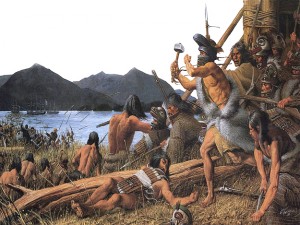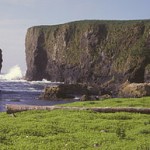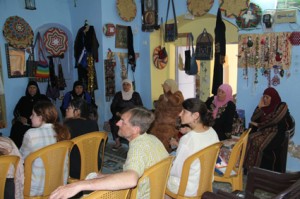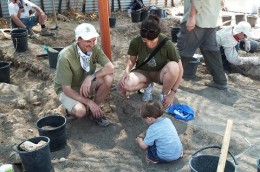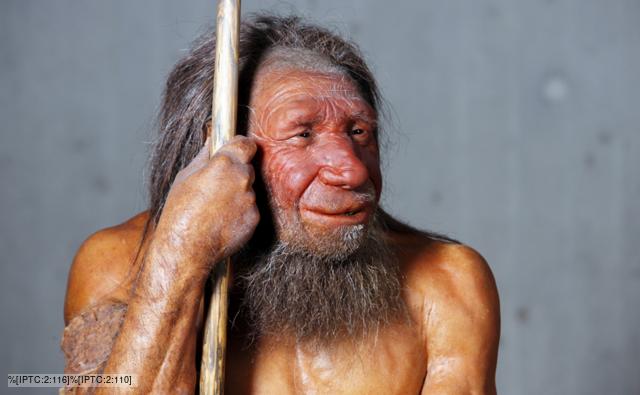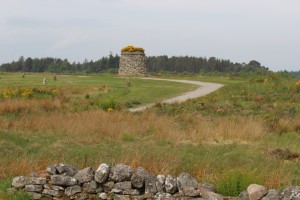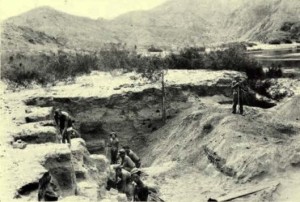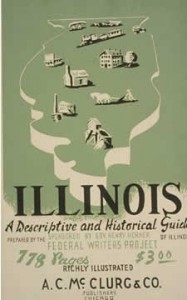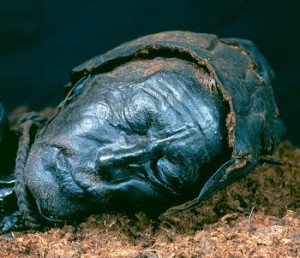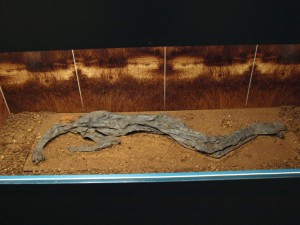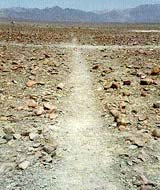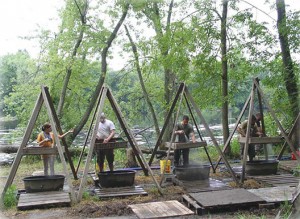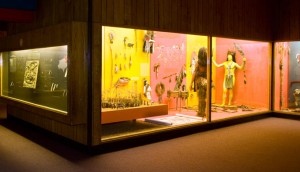Usually, the history of the colonization of the North America is dominated by authorities such as Spain, England and France. However, excavations in the past few decades in Alaska have brought light to the previously unknown period of Russian colonialism in America. This epoch consisted of a mixing of two thoroughly different cultures that is still apparent in the southwestern Alaskan landscape today. By studying archaeological findings that were confirmed to be from this Russian Colonial period, we can form a more in depth understanding of our own nation’s history as a whole.
Russian America began in the mid-18th century when groups of fur traders from Siberia traversed the Bering Strait and established camps in the Aleutian islands of southwestern Alaska. Sponsored by wealthy moguls, these trappers were well equipped and had practically an unlimited bounty of resources. Quickly, they began establishing their own infrastructure that consisted of houses, huts, docks and an array of forts that were scattered along the Alaskan coastline. In order to monopolize the seal population of the Alaskan coast, the Russian trappers moved in with brute force, often murdering entire villages and totally undermining the Aleutian way of life. In addition, the Russians exploited Aleutian natives and forced the indigenous people to work for them, often kidnapping the children of village leaders to ensure that hunters met their quota. As the Russians slowly moved eastward into the Alaskan mainland, native resistance steadily grew. Finally, in 1784, Grigorii Shelikhov led a group of infantry man to build an outpost on Refuge Rock, Kodiak Island. The trappers were met with a stiff Aleutian resistance, but Russian weaponry was simply too much for the native confrontation. The battle at Refuge Rock marked the beginning of a short stint of Russian occupancy in Alaska.
Today, there are few superficial indications of past Russian settlement. However, there is a treasure trove of artifacts and relics that lie just below the cold Alaskan soil. Brian Hoffman, an archaeologist at Hamline University, excavated a dwelling on Unimak Island and uncovered evidence of a massacre initiated by Russian trappers that included skeletal remains and broken weapons. Aron Crowell, the Director of the Smithsonian Institution’s Arctic Studies center, and a team of archaeologists have found a bounty of Russian artifacts including coins, samovars, religious items and pottery (American Archaeology, pp. 18). Because the trappers brought over an abundance of Russian supplies, archaeologists also found artifacts that were Russian in origin but were modified and reused by the native population. In addition to finding Russian artifacts that were used by natives, archaeologists found a trend of Russian architecture that had been adopted by the Aleutian people.

Archaeologists working to uncover Russian-America era artifacts
Relics buried under hundreds of years of soil are a perfect way to study the composition and evolution of a society. Stratigraphic evidence shows a distinct development of the Aleutian society that is clearly changed by Russian involvement. By understanding how different cultures affect one another’s growth, it is easier to study and make judgments about a nation’s social identity as a whole.
Picture 1: http://en.wikipedia.org/wiki/Battle_of_Sitka#mediaviewer/File:Battle_of_Sitka_by_Louis_S_Glanzman.jpg
Picture 2: http://en.wikipedia.org/wiki/Alaska_Maritime_National_Wildlife_Refuge#mediaviewer/File:Alaska_Maritime_National_Wildlife_Refuge,_Aleutian_Island_Unit.jpg
Picture 3: http://www.sha.org/index.php/view/page/alaska
References:
http://archive.archaeology.org/online/features/kadyak/rusala.html
American Archaeology Vol. 13 No. 2
http://www.akhistorycourse.org/articles/article.php?artID=202
http://www.nps.gov/akso/akarc/
https://www.princeton.edu/~achaney/tmve/wiki100k/docs/Russian_colonization_of_the_Americas.html

